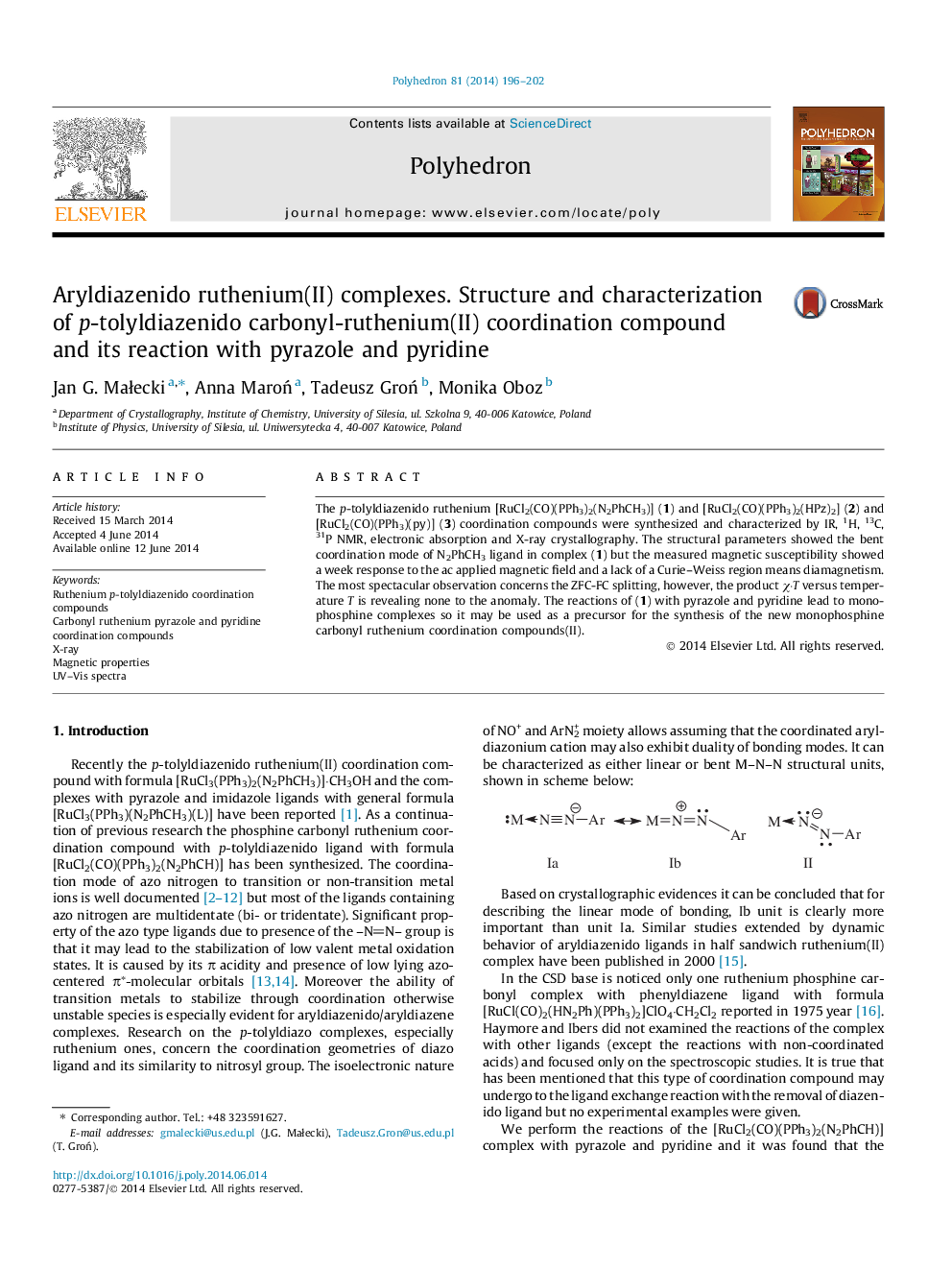| Article ID | Journal | Published Year | Pages | File Type |
|---|---|---|---|---|
| 1334420 | Polyhedron | 2014 | 7 Pages |
The p-tolyldiazenido ruthenium [RuCl2(CO)(PPh3)2(N2PhCH3)] (1) and [RuCl2(CO)(PPh3)2(HPz)2] (2) and [RuCl2(CO)(PPh3)(py)] (3) coordination compounds were synthesized and characterized by IR, 1H, 13C, 31P NMR, electronic absorption and X-ray crystallography. The structural parameters showed the bent coordination mode of N2PhCH3 ligand in complex (1) but the measured magnetic susceptibility showed a week response to the ac applied magnetic field and a lack of a Curie–Weiss region means diamagnetism. The most spectacular observation concerns the ZFC-FC splitting, however, the product χ·T versus temperature T is revealing none to the anomaly. The reactions of (1) with pyrazole and pyridine lead to monophosphine complexes so it may be used as a precursor for the synthesis of the new monophosphine carbonyl ruthenium coordination compounds(II).
Graphical abstractThe p-tolyldiazenido ruthenium(II) [RuCl2(CO)(PPh3)2(N2PhCH3)] (1), [RuCl2(CO)(PPh3)2(HPz)2] (2) and [RuCl2(CO)(PPh3)(py)] (3) complexes were synthesized and characterized by IR, 1H, 13C, 31P NMR, electronic absorption and X-ray crystallography. The structural parameters showed the bent coordination mode of N2PhCH3 ligand in complex (1) but the measured magnetic susceptibility showed a week response to the ac applied magnetic field and a lack of a Curie–Weiss region means diamagnetism. The most spectacular observation concerns the ZFC-FC splitting, however, the product χ·T versus temperature T is revealing none to the anomaly.Figure optionsDownload full-size imageDownload as PowerPoint slide
